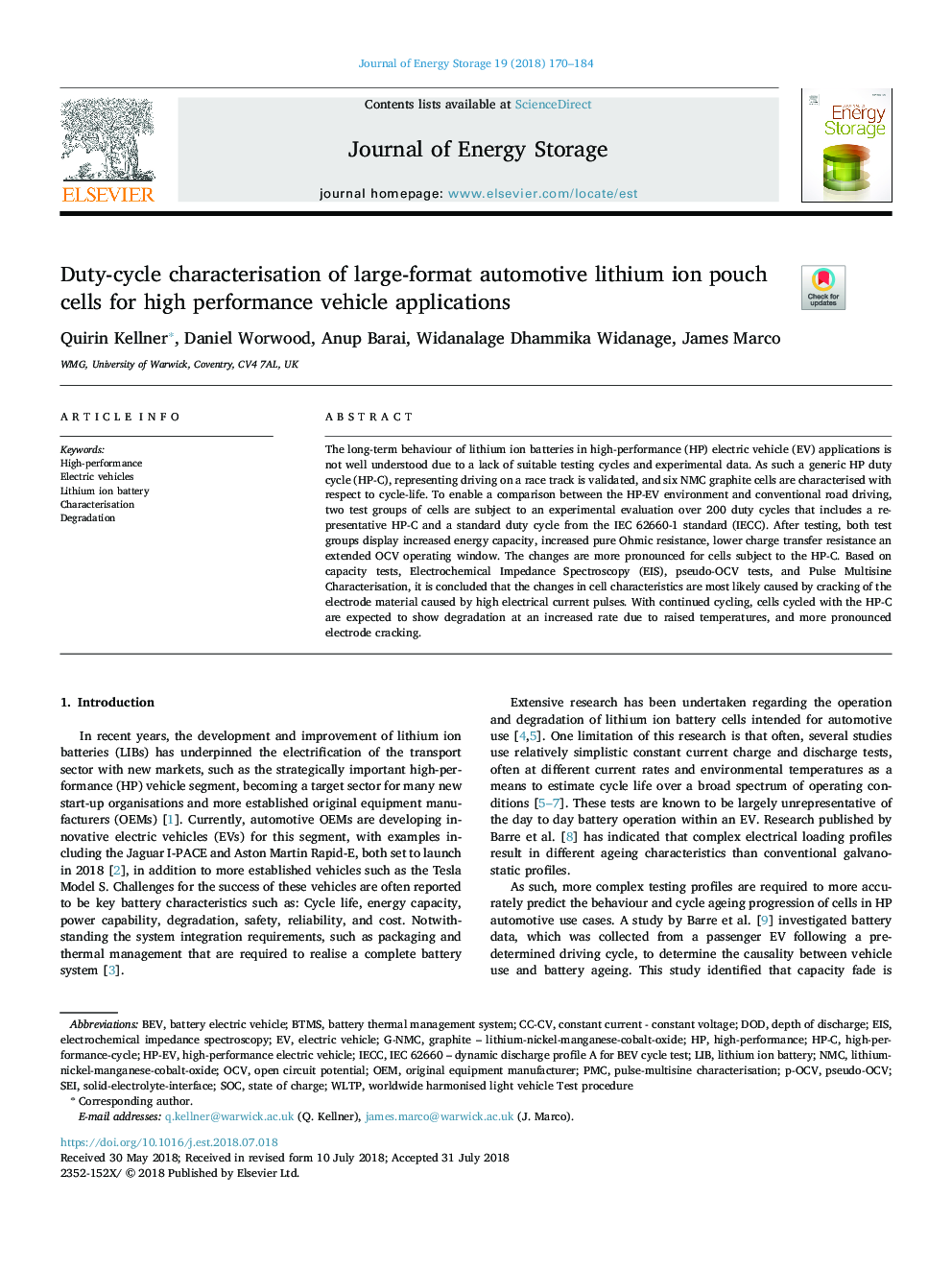| Article ID | Journal | Published Year | Pages | File Type |
|---|---|---|---|---|
| 7539607 | Journal of Energy Storage | 2018 | 15 Pages |
Abstract
The long-term behaviour of lithium ion batteries in high-performance (HP) electric vehicle (EV) applications is not well understood due to a lack of suitable testing cycles and experimental data. As such a generic HP duty cycle (HP-C), representing driving on a race track is validated, and six NMC graphite cells are characterised with respect to cycle-life. To enable a comparison between the HP-EV environment and conventional road driving, two test groups of cells are subject to an experimental evaluation over 200 duty cycles that includes a representative HP-C and a standard duty cycle from the IEC 62660-1 standard (IECC). After testing, both test groups display increased energy capacity, increased pure Ohmic resistance, lower charge transfer resistance an extended OCV operating window. The changes are more pronounced for cells subject to the HP-C. Based on capacity tests, Electrochemical Impedance Spectroscopy (EIS), pseudo-OCV tests, and Pulse Multisine Characterisation, it is concluded that the changes in cell characteristics are most likely caused by cracking of the electrode material caused by high electrical current pulses. With continued cycling, cells cycled with the HP-C are expected to show degradation at an increased rate due to raised temperatures, and more pronounced electrode cracking.
Keywords
BTMsOCVWLTPBEVNMCSEILiBDODPMClithium ion batteryEISCharacterisationDegradationElectric VehicleElectric vehiclesState of chargeoriginal equipment manufacturerSOCBattery thermal management systemElectrochemical impedance spectroscopyDepth of dischargehigh-performance OEMBattery electric vehicleOpen circuit potential
Related Topics
Physical Sciences and Engineering
Energy
Energy (General)
Authors
Quirin Kellner, Daniel Worwood, Anup Barai, Widanalage Dhammika Widanage, James Marco,
